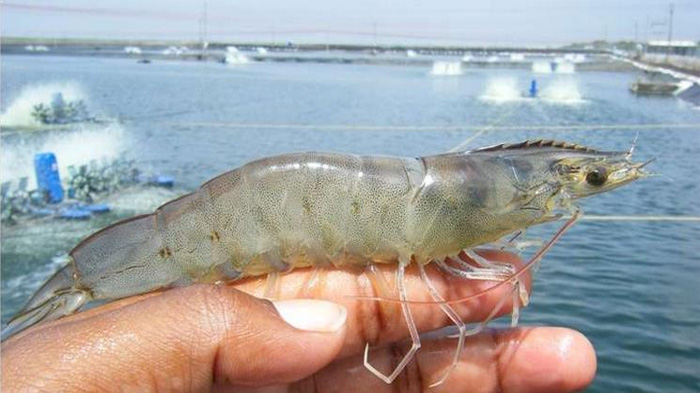Shrimp is a leading non-oil and gas export commodity that has high prices and a broad market share. Shrimp cultivation is a prospective sector to be developed because it has great potential. The success rate of white shrimp cultivation is largely determined by several factors. Among them, water quality and disease infections. Both of these factors can cause shrimp death in a short time after infection. One parameter that determines water quality and the environment in shrimp cultivation is Dissolved Oxygen (DO) in waters. Poor water quality can cause pressure on shrimp cultivation so that shrimp growth will be disrupted and reduce the body’s resistance to infection and cause death. Poor water quality provides the opportunity for Vibrio sp to infect vaname shrimp. Therefore, the presence of these bacteria must always be monitored during the maintenance period by counting the number of Total Plate Count (TPC) to determine the population of Vibrio sp. Besides, poor water quality and the presence of Vibrio sp bacteria in the waters cause an immune response from vaname shrimp. To find out the immune response from vaname shrimp by counting the Total Haemocyte Count (THC) and Differential Haemocyte Count (DHC).
Nanobubble: Technology to improve the quality of cultivation
One of the technologies used to improve water quality is using nanobubble technology. A nanobubble is a bubble (<200 nm) in a liquid that contains oxygen gas and has buoyancy so that it can last underwater longer than a large bubble. The smaller the bubble size, the smaller the buoyancy. 1 mm bubbles float at an altitude of 0.361 feet per second or 3610 times faster than nanobubbles that float at a speed of 0,0001 feet per second. So that nanobubbles can last longer than large bubbles, causing the availability of oxygen in the water to be fulfilled and can be used for biota’s living needs because of its metabolic activity. Besides, nanobubble catches pollutants (solids) suspended in the liquid and expands to the surface and used for decomposing organic matter. In a nanobubble system, oxygen in water can be available all the time, so DO in the waters becomes stable. Besides being able to fulfill the needs of oxygen for fish metabolism, nanobubble is needed to decompose organic matter such as food scraps and fish droppings so that the quality of the culture is maintained.
Method and Result
The first thing to do in this study was the maintenance of vaname shrimp using nanobubble for 30 days. The treatment basin was given nanobubble supplies 2 times per day. After 30 days of maintenance, shrimp blood sampling was performed to calculate THC and DHC. Then the bacterial culture media was prepared. Then after the bacterial culture media had been prepared, the next is sampling. The sample used consisted of media maintenance water and vaname shrimp (L. vannamei) taken from the cultivation basin. 1 ml of water sample was taken then dissolved in 9 ml of physiological NaCl. Vaname shrimp (L. vannamei) samples were aseptically dissected to take the hepatopancreas and weighed up to 1 gram. The hepatopancreas was mashed up using mortar and pestle then dissolved in 9 ml of physiological NaCl. After incubation for 18-24 hours at room temperature (28-30oC), TPC was then calculated.
The results of this study indicate that THC and DHC in vaname shrimp during nanobubble cultivation are increasing. Nanobubble produces dissolved oxygen for longer in the waters so that organisms can be used for decomposition of organic matter. The increase in THC and DHC also shows that shrimp health has improved, because THC and DHC are indicators to determine the immune response of shrimp. If the THC and DHC in shrimp are high, it shows that the immune from the shrimp is also increasing. From this study, it can be seen that nanobubble can reduce the number of Vibrio sp bacteria as indicated by the decrease in the number of Vibrio sp bacteria during maintenance using nanobubble on TPC calculation.
Writer: Dr. Gunanti Mahasri, Ir., M.Si.
Detail information from this research can be seen in the text at:
http//:ivj.org.in/sign-up/login.aspx
mahasritot@gmail.com
Mahasri, G., Sulmartiwi, L., Sudarno, Prayogo, Pamenang, G. D., Harifa, A. I. (2019). Nanobubble Aquaculture System: Its Effect Towards Immune Response and Infection of Vibrio sp. in Vannamei Shrimp (Litopenaeus vannamei). Indian Veterinary Journal, 96(05) : 21–23.





